Portable Septic Tank for RV
 |
| portable septic tank for rv |
Postable Septic Tank for RV offer all you RVers a convenient and flexible solution for emptying their camper waste holding tanks. These tanks allow RVers to avoid the hassle of moving their entire RV just to empty the tanks. This is particularly beneficial when camping at sites without sewer hookups. Come on guys get this sorted!
With a Portable Septic Tank for RV, RVers can easily transport their waste from the rig to the
nearby dump station ( so aptly named) , extending their stay at campsites without sewer connections. In this article, we will explore the advantages of using portable waste tanks, how they make RV dumping easier, and provide tips for proper usage and maintenance.
If you want to find out more about conventional Septic Tank Systems then see our other articles. For all the information you will ever need on Installation and Maintenance, we have you covered
Key Takeaways
- Portable waste tanks provide a convenient way to empty camper waste holding tanks without moving the entire RV.
- They are ideal for campsites without sewer hookups and allow for longer stays without needing to break down camp.
- RV waste tote tanks are beneficial for campgrounds that require moving the rig to the dump station and for extended stays on public lands.
- When choosing a portable waste tank, consider the storage capacity, wheel durability, and overall build quality for long-term use.
The Advantages of Using Portable Waste Tanks
If you click on a link and make a purchase, I may earn a commission at no additional cost to you. I am an Amazon Associate and I earn from qualifying purchases.
Using a portable waste tank provides RVers with the convenience and flexibility to stay at campsites without sewer connections for longer periods of time. This is especially advantageous in remote locations where access to dump stations may be limited.
RVers with limited mobility also benefit from using portable waste tanks as it eliminates the need to physically move the RV to a dump station. Instead, the waste can be easily transported from the rig to the dump station using the portable tank. This not only saves time and effort but also allows RVers to enjoy the beauty of remote locations without worrying about sewer connections.
Overall, the advantages of using portable waste tanks in remote locations and for RVers with limited mobility include extended stays, convenience, and the ability to fully experience the freedom of RV living.
How Portable Waste Tanks Extend Your Camping Stay
Extended camping stays can be achieved with the help of portable waste tanks. These tanks provide a convenient solution for campers who want to extend their trips without the need to move their entire rig.
By using a portable waste tank, campers can stay at campsites without sewer connections for a longer duration. This is particularly beneficial for campgrounds that require campers to haul their rig to the dump station. It also provides a great solution for boondocking on public lands where utility connections are not available.
With a portable waste tank, campers can avoid the hassle of packing up and breaking down camp every time they need to empty their tanks. This convenience and flexibility allow RVers to enjoy longer stays in their favorite camping spots, making their outdoor adventures even more enjoyable.
Making RV Dumping Easier With Portable Waste Tanks
Campers can simplify the process of emptying their waste holding tanks by utilizing portable waste tanks. These tanks provide a convenient and eco-friendly alternative for RV dumping. Here are four reasons why campers should consider using portable waste tanks:
Convenience: Portable waste tanks allow campers to empty their waste holding tanks without the need to move their entire rig. This saves time and effort, especially when camping at sites without sewer hookups.
Extended stays: With a portable waste tank, campers can stay at campsites without sewer connections for a longer duration. This is particularly beneficial for campgrounds that require moving the rig to dump the tanks.
Flexibility: Portable waste tanks are ideal for boondocking and staying in one spot longer than the tanks can last. It eliminates the need to pack up and break down camp for dumping, providing flexibility for RVers.
Eco-friendly: Using portable waste tanks ensures proper waste disposal and prevents pollution of the environment. It is a responsible and eco-friendly waste disposal option for RVers.
Convenience of Portable Waste Tanks for Campground Regulations
RV enthusiasts find that portable waste tanks offer a practical solution for complying with campground regulations regarding waste disposal.
These regulations often require campers to empty their waste tanks at designated dump stations, which can be a hassle if the campground is far from the site or if there are long lines at the station.
Portable waste tanks provide the convenience of being able to transport the waste from the RV to the dump station without having to move the entire rig. This allows RVers to easily comply with campground regulations and avoid any penalties or fines.
Additionally, portable waste tanks offer the benefit of allowing longer stays at campsites without sewer connections, as they provide a way to empty the tanks without having to break down camp and move the rig.
Overall, portable waste tanks offer flexibility and convenience for RVers while ensuring compliance with campground regulations.
Enjoying Long-Term Boondocking With Portable Waste Tanks
**Summary of Camping World's Video on Portable RV Waste Tanks**
Camping World's YouTube video, "How to Use a Portable RV Waste Tank", offers a comprehensive guide on the importance and use of portable waste tanks for recreational vehicles (RVs). The video highlights:
1. The video begins by introducing the concept of a portable waste tank, outlining its significance for RV users and addressing various terms it's known by.
2. One of the main advantages of the portable waste tank is its ability to allow campers to enjoy extended stays in areas without full hookups.
3. **Usage Guide**:
- How to attach a clear elbow and sewer hose.
- Steps to empty the RV tanks into the portable waste tank.
- Guidance on safely transporting the filled tank to a dump station.
- Instructions on thoroughly cleaning the tank after use.
4. **Tips and Troubleshooting**: The video doesn’t stop at just the basics. It delves deeper, offering advice for efficient use and addressing potential problems that might arise.
5. **Engagement and Additional Information**: Beneath the video, the comments section buzzes with activity as viewers share their experiences, ask questions, and engage with the content. Further details about the Camping World channel and related RV topics are also provided.
In summary, Camping World's video serves as an all-inclusive tutorial for RV enthusiasts, ensuring they get the most out of their portable waste tanks.
Boondockers can fully enjoy the freedom of long-term stays in remote areas by utilizing the convenience and flexibility provided by portable waste tanks. These tanks offer numerous benefits for those who prefer boondocking, including:
Extended stays: With a portable waste tank, boondockers can stay in one spot for a longer period without worrying about sewer connections or dump stations.
Waste disposal methods: Portable waste tanks provide an easy and efficient way to dispose of waste while boondocking, eliminating the need to break down camp and move the RV.
Convenience: Boondockers can simply transport the tank from their rig to a nearby dump station, saving time and effort.
Flexibility: Portable waste tanks allow boondockers to choose their camping locations without the restriction of sewer hookups, providing more options for remote and scenic spots.
Hassle-Free Waste Disposal With Portable Tanks
Utilizing a portable waste tank offers a hassle-free solution for waste disposal while enjoying long-term stays in remote areas. These tanks serve as convenient alternatives to traditional waste disposal methods, providing flexibility and convenience for RVers.
In addition to their convenience, portable tanks also offer eco-friendly waste disposal options. They allow campers to properly dispose of their waste without harming the environment. These tanks can be easily transported from the rig to the dump station, eliminating the need to move the entire RV.
When considering portable tank alternatives, it is important to look for tanks with durable wheels for easy maneuverability and a rugged construction for long-term use.
The Freedom of Not Breaking Camp for Dumping
When campers have a portable waste tank, they can enjoy the freedom of not having to break camp every time they need to dump their tanks. This convenience comes with several benefits:
Longer Stays: With a portable waste tank, campers can extend their stays at campsites without sewer connections. They no longer have to worry about finding a dump station or moving their RV.
Campground Requirements: Some campgrounds require campers to haul their rigs to the dump station for tank dumping. A portable waste tank makes this process much easier and more convenient.
Extended Boondocking: For campers staying in one spot for an extended period, a portable waste tank is a must-have. It allows them to stay longer than their tanks can last without worrying about dumping.
Convenience and Flexibility: The portable waste tank eliminates the need to pack up and break down camp just to dump the tanks. It provides convenience and flexibility for RVers on the go.
When choosing the right size portable waste tank, campers should consider their specific needs and the storage capacity of the tank.
Enhancing Rving Flexibility With Portable Waste Tanks
Campers can greatly enhance their RVing flexibility by incorporating the use of portable waste tanks into their camping setup. These tanks offer several advantages that maximize RVing convenience. With a portable waste tank, campers can extend their stays at campsites without sewer connections, as they no longer have to worry about the capacity of their onboard waste holding tanks.
This is especially beneficial for campgrounds that require moving the rig to the dump station. Additionally, portable waste tanks are ideal for boondocking and staying in one spot longer than the tanks can last. They eliminate the need to pack up and break down camp for dumping, providing convenience and flexibility for RVers. By investing in a high-quality portable waste tank, campers can ensure they have a reliable and efficient solution for managing their waste while on the road.
Choosing the Right Size Portable Waste Tank for Your Needs
By considering the desired capacity and storage needs, individuals can choose the right size portable waste tank for their specific requirements. Here are some tips for choosing the right capacity and ensuring easy transportation of the portable tank:
Determine your waste disposal needs: Assess how often you will be emptying the tank and the amount of waste generated. This will help you determine the appropriate capacity for your portable waste tank.
Consider the available storage space: Measure the space in your RV where you plan to store the tank. Ensure that the chosen size fits comfortably in the designated storage area.
Look for handles and wheels: Opt for a portable waste tank with sturdy handles and wheels. This will make transportation easier, especially when moving the tank from your RV to the dump station.
Check the weight distribution: Consider the weight distribution of the tank when it is filled with waste. Make sure it is balanced and easy to maneuver, to avoid any strain or difficulties during transportation.
Maneuverability Matters: Selecting the Best Wheels for Your Portable Tank
The durability and maneuverability of the wheels on a portable tank are key factors to consider when selecting the best option for easy transportation.
When it comes to portable tank wheels, selecting the right size is crucial. The size of the wheels will determine how well the tank can be moved across different terrains and surfaces.
Larger wheels are generally more suitable for rough or uneven surfaces, as they provide better stability and maneuverability. On the other hand, smaller wheels may be more suitable for smooth surfaces or situations where space is limited.
It is important to choose wheels that are made from durable materials, such as rubber or plastic, to ensure they can withstand the weight of the tank and the rigors of transportation.
Construction Quality: What to Look for in a Durable Portable Tank
After considering the importance of maneuverability in selecting the best wheels for a portable waste tank, it is equally crucial to evaluate the construction quality of the tank itself. Durability considerations and the benefits of high-quality construction play a significant role in ensuring the longevity and effectiveness of the portable tank.
Here are four key factors to look for when examining the construction quality of a durable portable tank:
Robust materials: Opt for tanks made from sturdy materials such as high-density polyethylene (HDPE) or durable plastics that can withstand rough handling and exposure to harsh outdoor elements.
Reinforced seams: Look for tanks with reinforced seams and welds, as they provide added strength and prevent potential leaks or cracks over time.
Secure fittings: Ensure that the tank's fittings, such as the valves and hose connections, are securely attached and durable, allowing for easy and reliable waste disposal.
UV resistance: Consider tanks with UV-resistant coatings or materials to protect against sun damage and discoloration, ensuring long-lasting performance.
Step-by-Step Guide: How to Properly Empty a Portable Waste Tank
To properly empty a portable waste tank, one should follow a step-by-step guide that outlines the necessary procedures.
The RV waste tank disposal process starts by locating a dump station equipped with a sewer connection. Once at the dump station, the user should connect the tank's hose to the sewer connection and secure it tightly.
Next, the valve on the tank should be opened to allow the waste to flow out into the sewer. It is important to empty the tank completely to avoid any residual waste.
After emptying the tank, the hose should be thoroughly rinsed with clean water to remove any remaining debris.
Finally, the tank should be securely closed and stored in a clean and dry area.
Transporting Your Portable Tank: Tips and Tricks
When transporting a portable tank, RV enthusiasts should ensure it is securely fastened to their vehicle for safe and hassle-free travel. Here are some best practices for transporting portable tanks:
Secure the tank: Use sturdy straps or bungee cords to secure the tank to the vehicle. Make sure it is tightly fastened and won't shift during travel.
Protect the tank: Place the tank in a protective cover or bag to prevent damage from road debris or weather conditions.
Check for leaks: Before hitting the road, inspect the tank for any leaks or cracks. Fix any issues before transporting to avoid spills or contamination.
Dispose of waste properly: When emptying the tank, ensure proper disposal at designated dump stations. Follow environmental considerations by using biodegradable cleaning agents and avoiding dumping in prohibited areas.
Manufacturer's Instructions: A Must-Follow for Using a Dump Tank
Following the manufacturer's instructions is crucial for safely and effectively using a dump tank. These instructions provide valuable guidance on how to properly operate the tank and ensure its longevity. In addition to following the instructions, proper maintenance is essential for keeping the dump tank in optimal condition. This includes regular cleaning and inspection to prevent any potential issues. By adhering to the manufacturer's instructions and implementing proper maintenance practices, RVers can maximize the lifespan of their dump tank and avoid costly repairs or replacements.
To give you a clearer picture, here is a table summarizing the key points to consider when using and maintaining a portable RV waste tank:
Manufacturer's Instructions
- Follow the instructions provided by the manufacturer for using the dump tank.
- Learn how to properly empty the tank at a dump station.
- Understand the process of transporting the tank from the rig to the dump station.
Proper Maintenance
- Clean the portable black water tank thoroughly after each use.
- Regularly inspect the tank for any signs of damage or wear.
- Store the tank in a clean and dry area to prevent any potential issues.
Here are some additional tips for proper maintenance of a portable black water tank:
- Use a mild detergent and water to clean the tank. Avoid using harsh chemicals, as these can damage the tank.
- Rinse the tank thoroughly after cleaning.
- Allow the tank to air dry completely before storing it.
- If the tank is not going to be used for an extended period of time, add a biocide to the tank to prevent the growth of bacteria.
By following these manufacturer's instructions and proper maintenance tips, you can help to ensure that your portable black water tank lasts for many years.
Cleaning and Maintenance Tips for Your Portable Black Water Tank
Regular cleaning and inspection are essential for maintaining the portable black water tank and preventing any potential issues. Here are some cleaning tips for RVers to keep their portable tanks in top condition:
Rinse the tank thoroughly after each use: Use a hose or bucket of water to flush out any remaining waste and debris from the tank.
Use a tank cleaner: Regularly use a specialized tank cleaner to break down and eliminate any stubborn waste buildup inside the tank.
Scrub the tank walls: Use a long-handled brush or sponge to scrub the interior walls of the tank, ensuring all residue is removed.
Check for leaks or damage: Inspect the tank for any signs of leaks, cracks, or damage. Address any issues promptly to prevent further damage.
Frequently Asked Questions
What Are the Different Types of RV Waste Tanks Available?
There are different sizes of RV waste tanks available, offering various benefits for users. These portable tanks provide convenience and flexibility by allowing longer stays at campsites without sewer connections and eliminating the need to move the entire rig for dumping.
How Often Should a Portable Waste Tank Be Emptied?
A portable waste tank should be emptied regularly to avoid overflow and maintain hygiene. Proper maintenance includes cleaning the tank thoroughly after each use and following manufacturer instructions. Emptying frequency depends on individual usage.
Can a Portable Waste Tank Be Used for Both Gray Water and Black Water?
A portable waste tank can be used for both gray water and black water. Gray water comes from sinks and showers while black water comes from the toilet. Proper disposal is important to prevent contamination.
Are There Any Restrictions on Where a Portable Waste Tank Can Be Emptied?
There are certain restrictions on where a portable waste tank can be emptied. RVers should consider local regulations and campground rules. Improper disposal can have negative environmental impacts, so it's important to follow proper waste management practices.
How Do You Properly Clean and Maintain a Portable Waste Tank?
Properly cleaning and maintaining a portable waste tank involves following manufacturer instructions, thoroughly cleaning after each use, and familiarizing oneself with the concept of an RV Blue Boy. Common mistakes to avoid include improper disposal and neglecting regular maintenance.

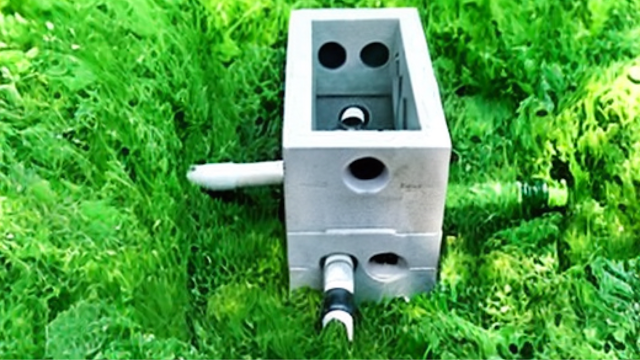
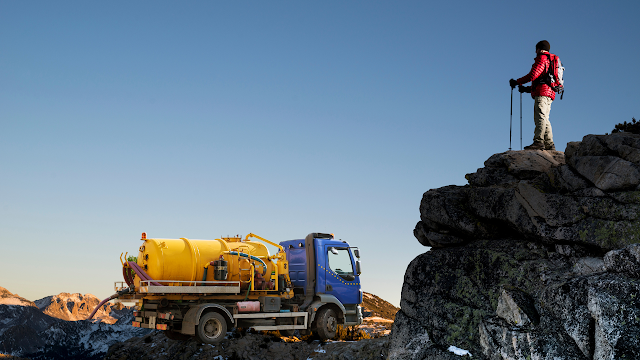
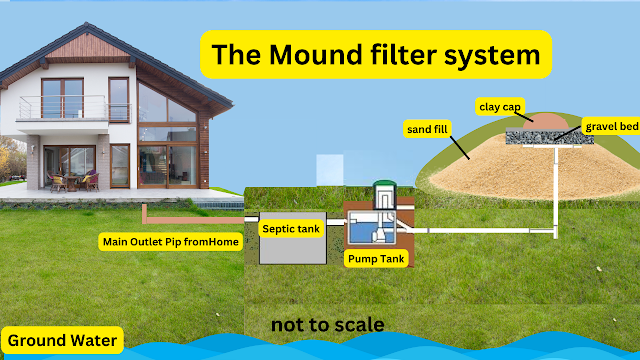
.png)

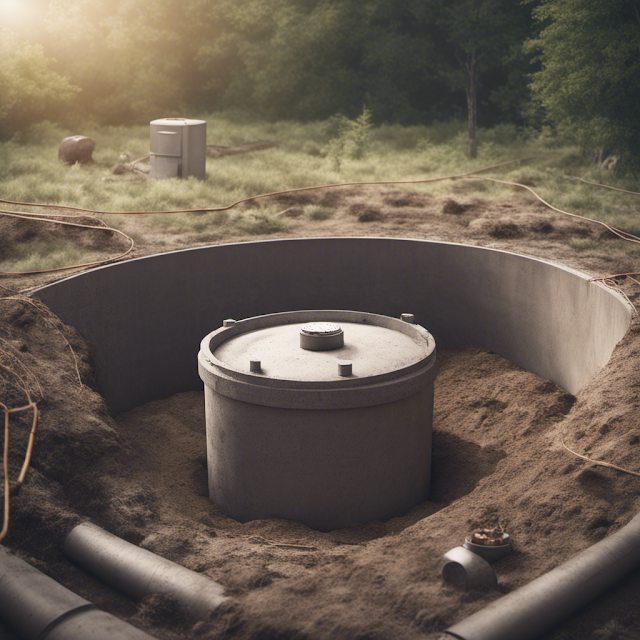
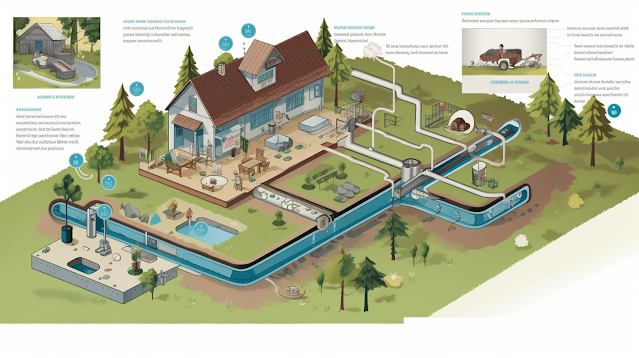
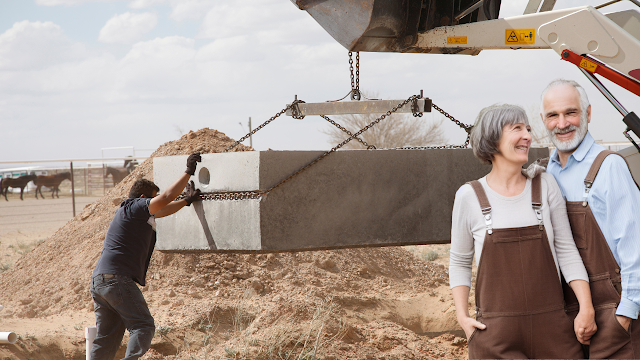


Comments
Post a Comment